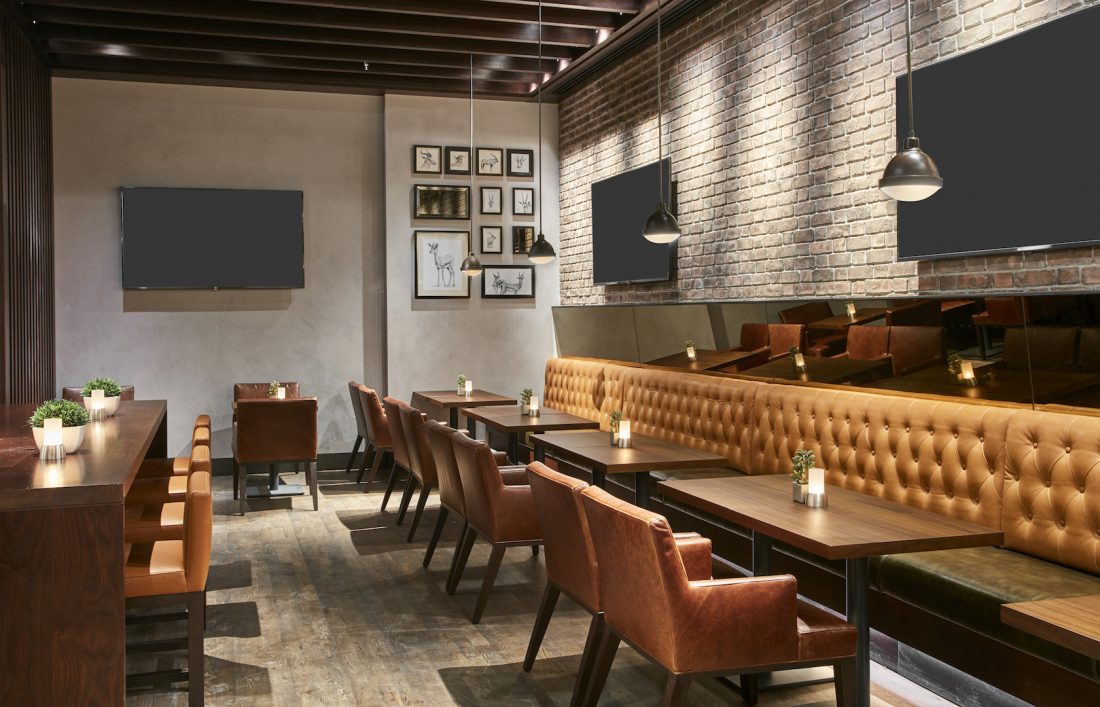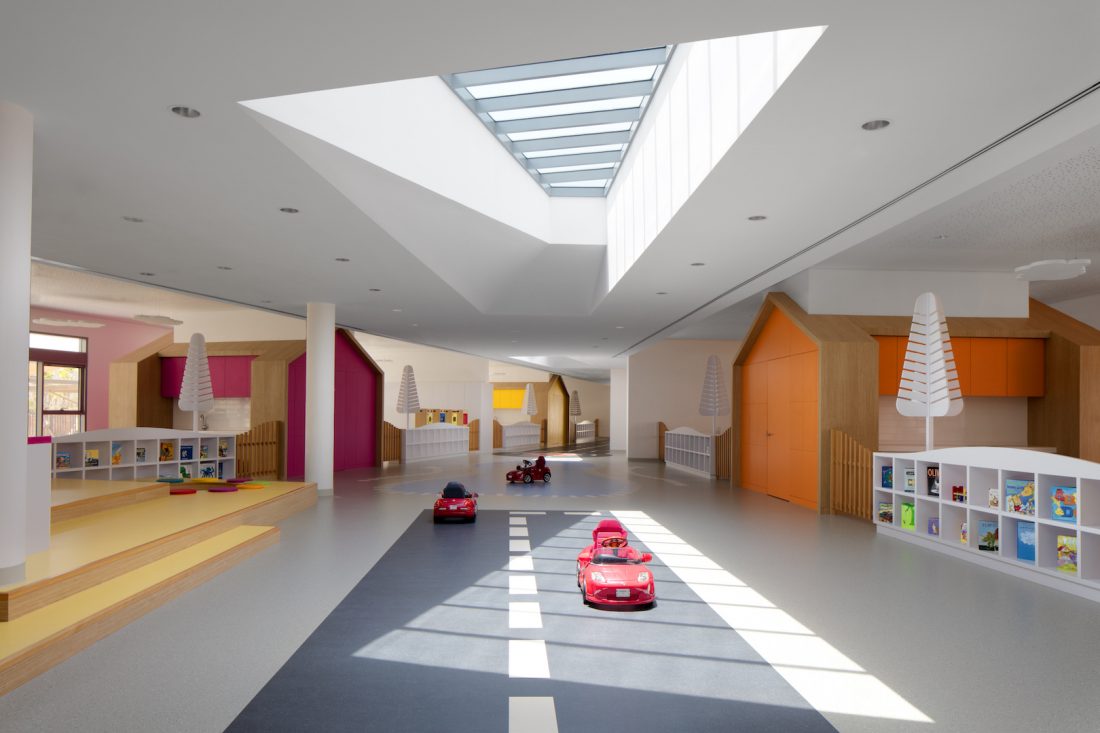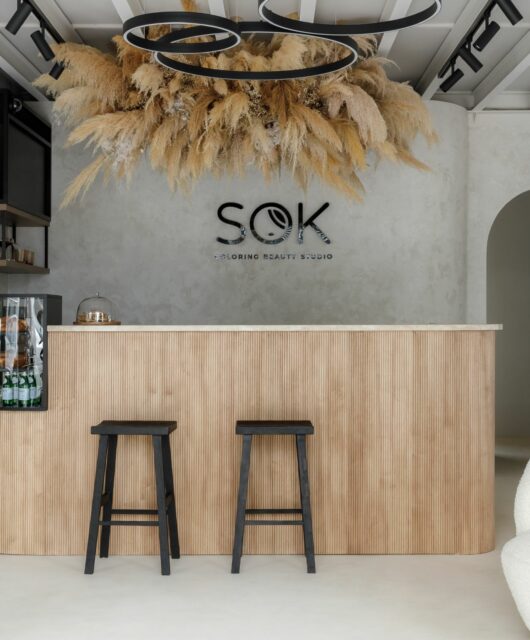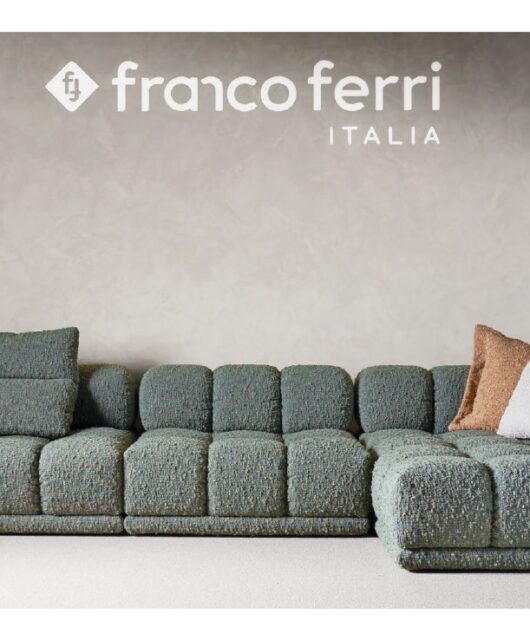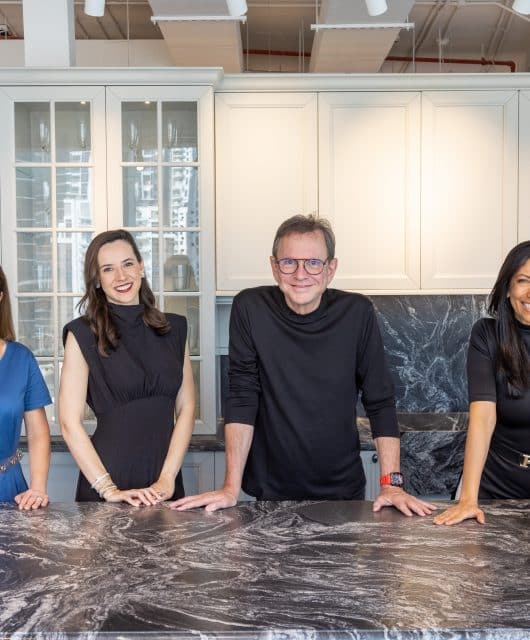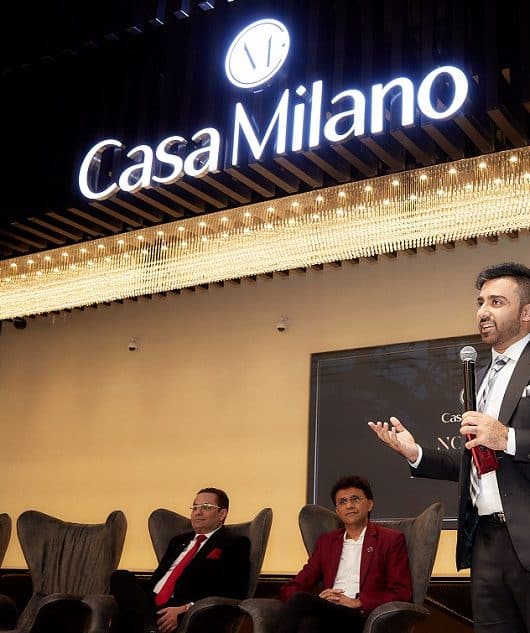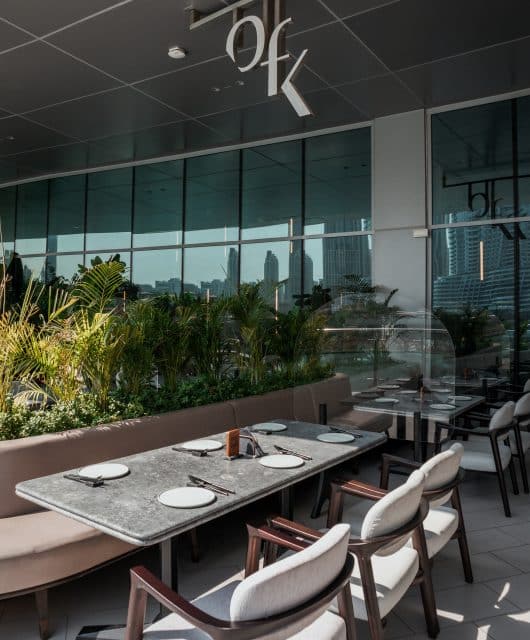The Changing Facade of Interior Designing
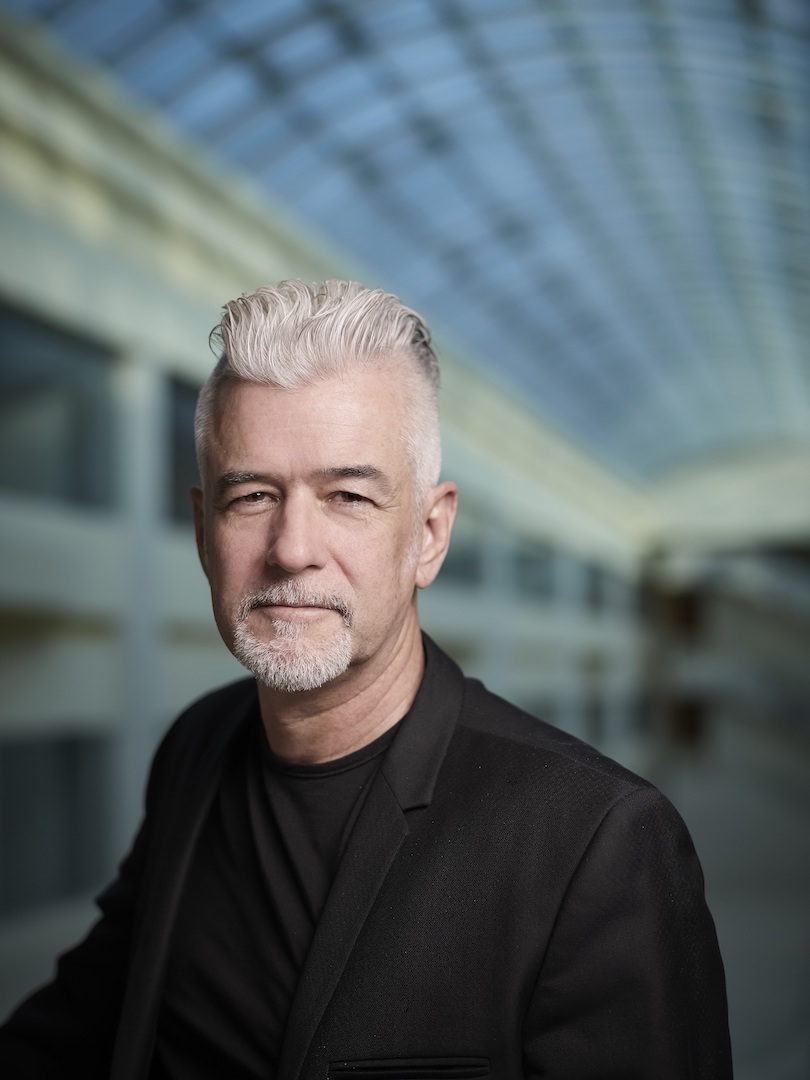 Kevin McLachlan, Partner at Godwin Austen Johnson, talks about efficient interior designs and Dubai beyond Expo 2020 – By Veathika Jain
Kevin McLachlan, Partner at Godwin Austen Johnson, talks about efficient interior designs and Dubai beyond Expo 2020 – By Veathika Jain
Having worked on the Heathrow Project in London and then the creation of Midland Banks, Kevin McLachlan, Partner at Godwin Austen Johnson, was more interested in being a product designer than an interiors specialist. “I wanted to be product designer specifically a car designer but I think interiors was already to be my destiny. When I was ten, my father secured a holiday job for me, with a designer who I thought designed racing cars in Bangkok to keep me occupied. Unfortunately he only occasionally followed what really was his hobby, whilst his real work lay in designing hotels. So instead of designing cars I spent my time colouring in concept visuals for a five star hotel in Bangkok,” says Kevin.
Kevin has been involved in various projects in the hospitality and leisure industry from small scale food and drink outlets to large master-planned mixed-use developments, from Glasgow’s Groucho Club Hotel to Ibiza’s Café Mambo and Dubai’s Madinat Jumeirah, to name a few. We asked him about designing in the UAE and more.
What are the design principles that you follow in each project?
I believe successful interiors should be simple and this is achieved by using a limited palette of materials offset with bold elements. I think one or two good big ideas are enough to achieve this but the real difficulty is holding back. My approach for most of my projects is with a photographer’s eye. I design to an imagined photograph – that is my goal, very much like a film director with a storyboard. I compose the photograph in my mind or in sketch and then I compose the space. Typically I will walk through a project from the front door to the back in a couple of days in my mind and this will become our goal. Having said that, without the technical knowledge, it will be tougher to convince your clients and colleagues.
What are GAJ’s strengths when it comes to interior designing?
At the core of what we do is the team, so it is important that our team gels. We all come from different backgrounds and cultures so we are a bit of a collaborative social experiment, but it is one that works. I believe we are known in the market for our creativity, passion, professionalism, organisation and teamwork.
Do you see a lot of design projects centred on Dubai Expo 2020?
Everything seems to be geared toward Expo2020 right now but I think this is a mistake. Believe it or not the world will go on beyond 2020 and life will be much the same as it is now. The market is mature enough not to stall once Expo2020 has been and gone and the wise investors are renovating their assets to protect or reinvent them to stay competitive
I think after 2020 architecture will slow down but interior design will not notice too significant a slowdown as we start to see more renovations of existing buildings.
How has interior design changed over the years in the UAE?
Interior design has changed in a big way over the last eighteen years. Before, designs were very classical and it was originally all about a few individuals, but buildings such as the Emirates Towers coming on to the landscape, really opened up the city and now anything is possible. What we create now is world class and rivals anywhere in the world.
Today’s Emirati youth, whether clients or not, are very forward thinking and this open-mindedness has really opened up the market. It is less inhibitive than it once was. Once upon a time people here used to play it very safe but now they are willing to take more risks in terms of design. They understand that they need to be different to sell so there is a lot more respect for design. That is the fantastic thing about the UAE is that it is the youth driving the country and so there are less barriers today.
Do you see a lot of efficient green practices in interior designing in the UAE?
Efficient design is ingrained into everything we do. Interior design is inherently not environmentally sustainable as most of the products we use in this region are imported. However as a practice our approach is energy efficient and much of what we do is in line with the Emirates Green Building Council’s policies. We try to design to minimise waste and will look at materials that weigh less to ship so we focus more on coverings rather than solid materials.
With the decline in the marble industry globally coupled with its environment impact we have found that there have been huge advances in ceramics in recent years. The quality of marble replication in porcelain mega ceramics is astounding. This has a huge environmental impact both in the reduction in weight of shipping environmentally, with cost now at 50% of equivalent marble, they make for a very attractive proposition.
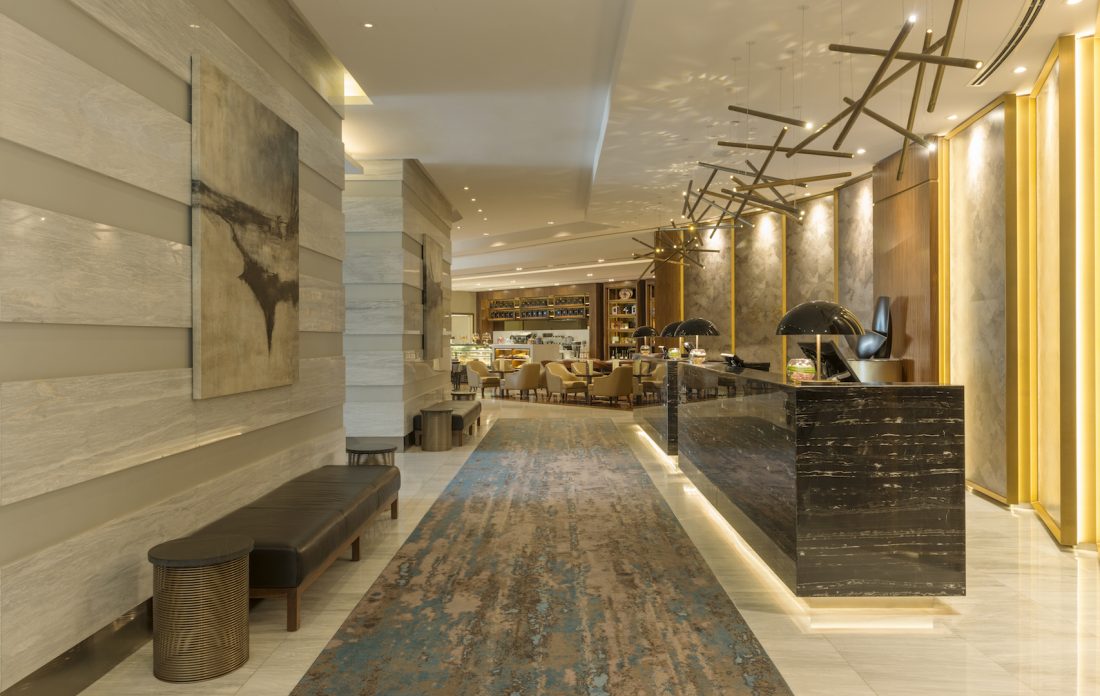
Lighting adds drama and character and it affects our moods. Tunable LED fixtures, which allow us to change the interior atmosphere according to the time of day or creating scenes to improve the look and feel of the work environment, or even to improve the recovery of patients in hospitals, is one of the many improvements we are seeing in the development of lighting products and lighting control systems.
Equally, we want to be able to provide the best design and lighting features while maintaining a low carbon footprint, to strive to be as efficient as possible to reduce energy consumption while considering the quality of the lit space and of the light sources used in a project.
How does furniture affect interior design?
We do require a variety of furniture as we have an assortment of projects from heritage buildings and resorts to high-end hospitality. We source furniture from the Far East to Europe that needs to be able to tell a story in its own way. We do get items manufactured locally too, which can surprisingly be of very good quality compared to mass-produced items in other countries.
Our general selection of furniture is very contemporary and, and we are very lucky to get introduced to products that have not yet come to the market.
The market is very fashion driven with new items coming out every year. Generally it could be two years before we see the product in the market so we do need to think ahead about what the designs should look like, way in advance, so they have built in longevity.
What are the projects you are excited to be working on?
We have some new hospitality brands that are coming to market within the Jewel of the Creek project, which we have designed, which challenge the norm. In addition we have over 20 new restaurant brands that we have designed which is very exciting and we also have a new airport hotel brand that we are currently working on which will see 300% occupancy once it is operational. It is an interesting brand and an unusual design challenge for us.
What are the future products that will be seen in interiors?
I think ceramics is going to continue to gain ground, those that replicate marble and stones are getting better and better so this is a very important market. I do think our love affair with the eclectic and BoHo will not die fast. What we will see or not see is the unseen de-tethering of technology integrated in our interiors.

